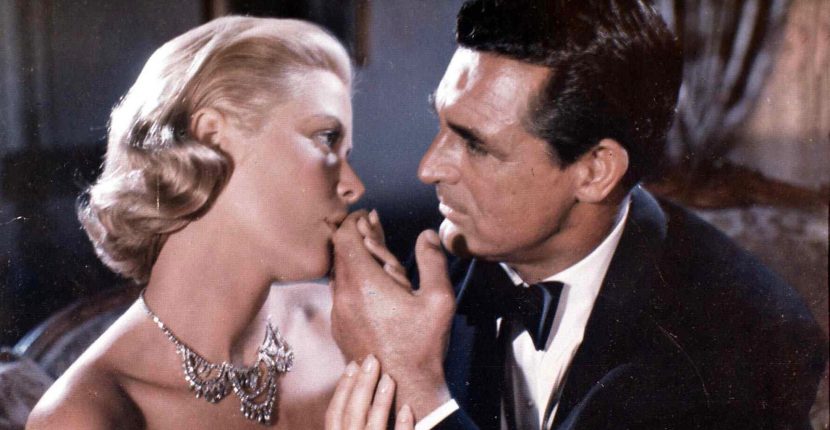
Grace Kelly and Cary Grant in 'To Catch A Thief' Photo Alamy
Movies & TV
7 Hitchcock Films with Major Jewelry Moments
The Master of Suspense cast jewelry in several different roles
Lists of movies to stream are cropping up everywhere with people worldwide looking for home entertainment. While I steadily post jewelry movie reviews, the list-o-mania got me to thinking I needed to provide a movie list with a theme more specific than just jewelry on The Adventurine.
In Hollywood Jewels, the book I co-authored with Penny Proddow, we devoted an entire chapter to Alfred Hitchcock and he is worthy of an at home jewelry film festival. The director loved jewelry and even went on at least one browsing excursion with Grace Kelly to Cartier in New York. He understood the powerful and varied symbolism jewelry can take on in a film like none other.
Hitchcock used jewel in any number of movies to turn the plot. Sometimes the pieces were major. Those usually came from actresses’ personal collections. Jewels were often props that expressed a character’s status or a visual way to represent an important scene. In several films, jewelry was a clue used to solve a murder.
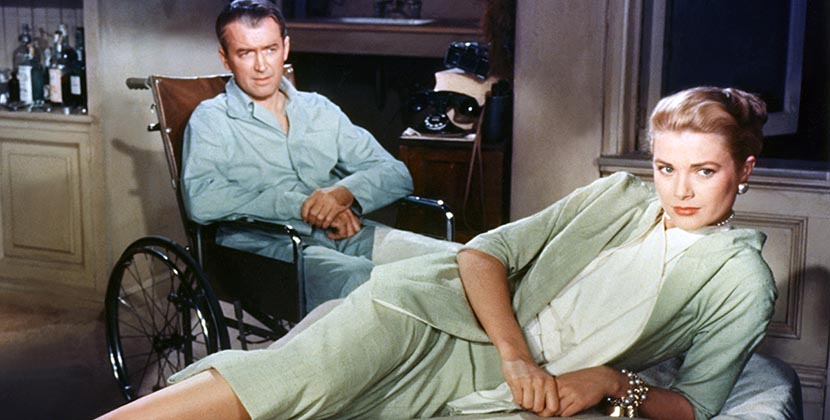
James Stewart and Grace Kelly in ‘Rear Window’ Photo by Paramount Pictures
Rear Window (1954)
I first saw Rear Window as a child when my father, who was a film buff, showed it to me. I have watched it countless times since and each viewing I swear I see something new. In the context of our current situation it’s interesting to note that James Stewart, who portrays a photo journalist was housebound while his broken leg heals and that is what transforms him into a nosey neighbor.
Grace Kelly, who plays Stewart’s girlfriend, is a fashion editor. She visits him daily and her profession means she wears stunning clothes and fabulous mid-century daytime accessories. Her bold pearl charm bracelet still has a cult following. Jewelry also provides the clues that solve the murder Stewart sees outside his rear window.
Read a full jewelry movie review here.
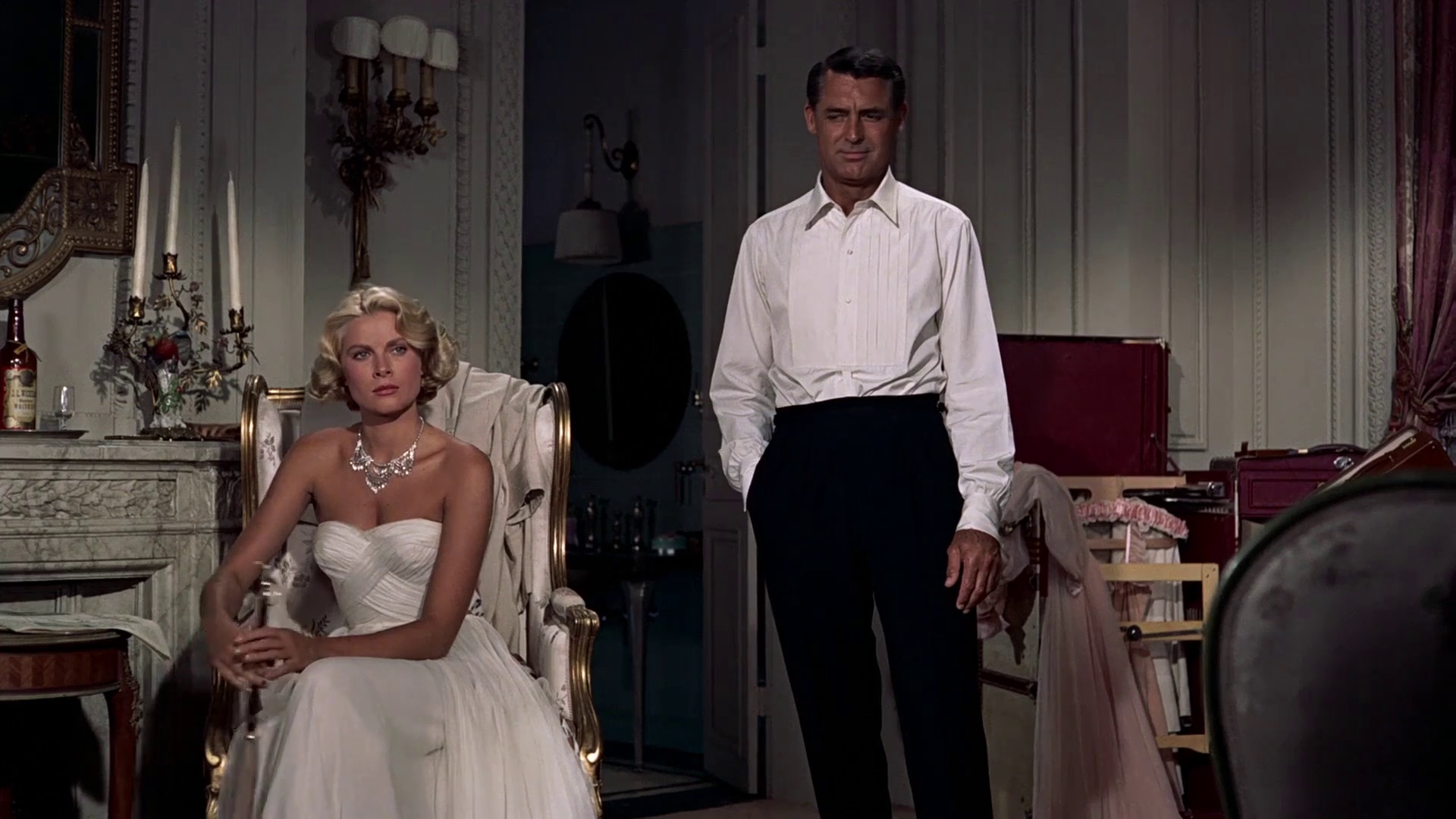
Grace Kelly and Cary Grant in To Catch A Thief Photo
To Catch A Thief (1955)
Hitchcock’s jewel-thief thriller, stars Grace Kelly as an American heiress visiting the French Riviera with her bejeweled mother. The film incorporates one of Hitchcock’s favorite scenarios, an innocent man who finds himself accused of a crime by the police. This time the innocent man is a former jewel thief played by Cary Grant.
While the picture above is often shown as an example of jewelry in the movies it is costume jewelry. In fact, Kelly is wearing it in an attempt to lure Grant into stealing it. He tells her after studying the piece with all the seriousness of a connoisseur, “You know as well as I do this necklace is an imitation.”
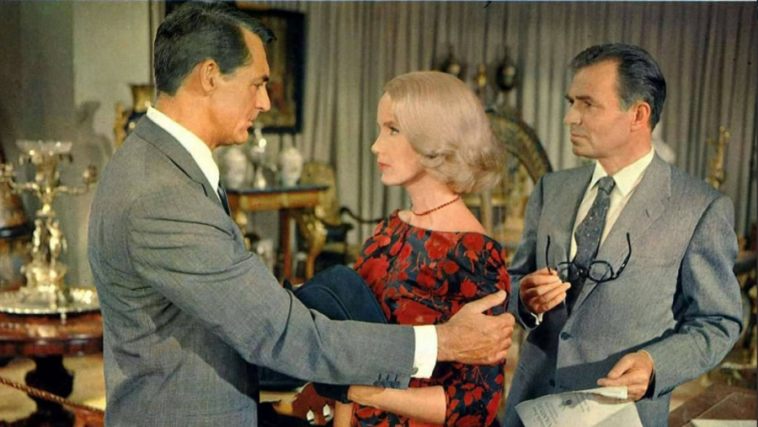
Cary Grant, Eva Marie Saint and James Mason in ‘North by Northwest’ Photo Alamy
North by Northwest (1959)
In the over 50 films Hitchcock made, North by Northwest is among the very best. It stars Cary Grant as an ad executive who has been mistaken for another man and is falsely accused of murder. While he tries to clear his name, he meets up with the cool Eva Marie Saint. The actress is beautifully costumed in the film. She doesn’t wear a lot of jewelry, but she does use the excuse of a lost earring to get out of a tense situation. And it works!
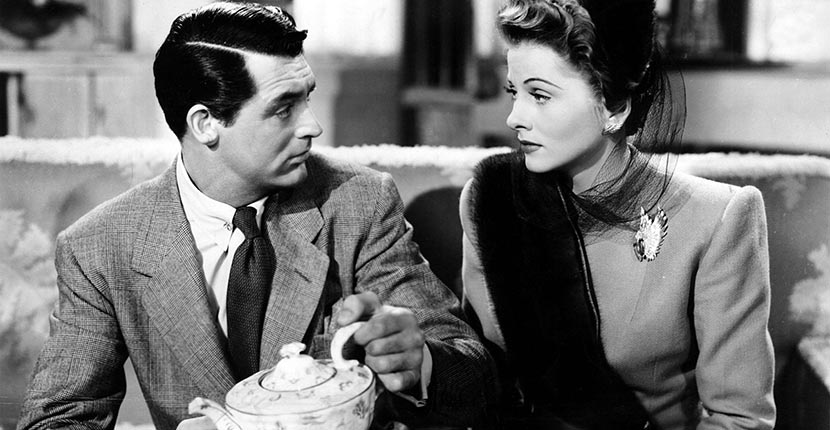
Cary Grant and Joan Fontaine wearing her Verdura brooch in ‘Suspicion.’ Photo Alamy
Suspicion (1941)
“Somehow I was the kind of a girl to whom husbands—and other men, too—gave copper frying pans,” Joan Fontaine once hilariously explained. “I could never could quite figure it out.” The lack of jewelry gifts from the men in her life did not stop the star from building her own amazing collection. Long before “self-purchasing” became a term for women buying their own jewels, Fontaine was shopping for what she wanted and her acquisitions were not meager basics. Like many stars of the era, Fontaine wore her own jewelry in her movies. Some of her best treasures appear in the 1941 Alfred Hitchcock thriller Suspicion.
In the film Fontaine portrays Lina McLaidlaw, a wealthy woman who becomes completely infatuated with the con artist Jonnie Aysgarth portrayed by Cary Grant. It’s obvious from the first scene he is a hustler, but Fontaine doesn’t begin to really realize his duplicity until after they are married and arrive in a lavish home he can’t pay for. During the dramatic revelation that he is totally broke, Fontaine wears the magnificent Wing brooch she had purchased from Verdura in 1939.
Read a full jewelry movie review here.
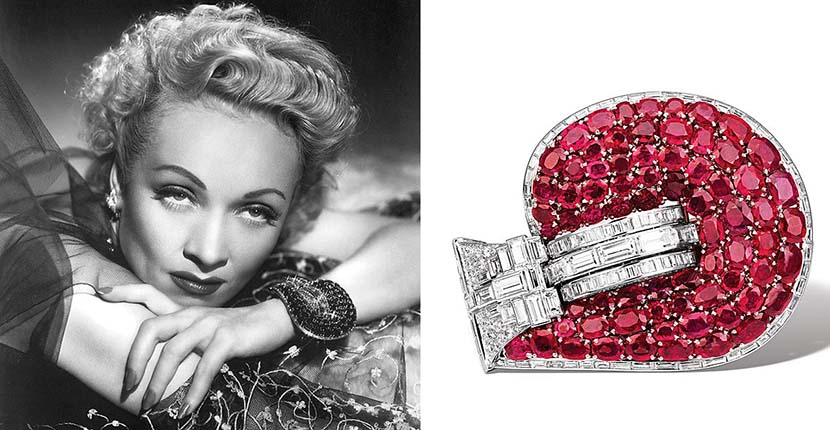
Marlene Dietrich wearing her Van Cleef & Arpels Jarretière ruby and diamond bracelet. Photo Silver Screen Collection/Getty Images
Stage Fright (1950)
Few actresses have smoldered on screen and in photos like Marlene Dietrich. The star knew lighting, how to work her angles and melted the lens. Jewelry was one of the props she used effectively throughout her career to make the pictures more potent. Dietrich did not go for small delicate pieces. Her jewels were huge statement making creations
In Alfred Hitchcock’s 1950 murder mystery Stage Fright, the actresses flaunted one of the largest jewels in her collection, a Van Cleef & Arpels Jarretière ruby and diamond bracelet. Dietrich who was 49-years old at the time the film debuted, played an aging actress who has driven her young lover, Jonathan Cooper (Richard Todd), to murder her husband in a fit of jealous agitation. Like Dietrich in real life her character, Charlotte Inwood, had clearly been the recipient of many significant jewelry gifts.
Read a full jewelry movie review here.
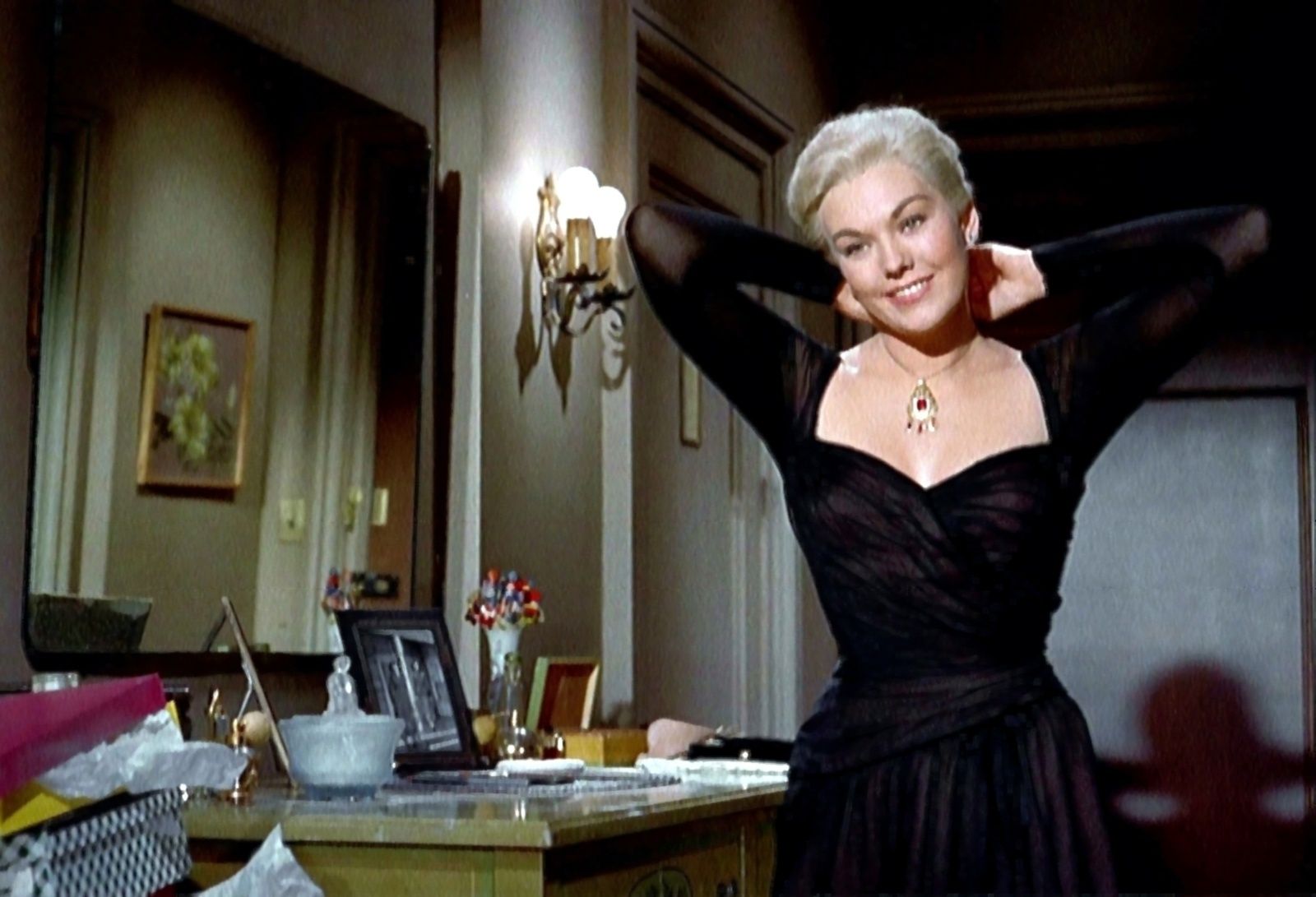
Kim Novak putting on a necklace in ‘Vertigo.’ Photo Alamy
Vertigo (1958)
In Vertigo, Hitchcock takes a woman’s affection for jewelry and turns it into a flaw that leads to the solution of a murder. James Stewart plays a San Francisco police detective, Scottie Ferguson, who has resigned from the force because his acrophobia and vertigo kept him from rescuing a fellow policeman, who subsequently fell to his death. Out of work, Scottie is persuaded by an old schoolmate to follow his wife Madeline (Kim Novak).
Madeline has begun to show signs of mental instability, according to her husband: she seems to be possessed by her great-grandmother who committed suicide in 1855. Tailed by Scottie, Madeleine goes to Carlotta’s grave, visits her house, which has become the McKittrick Hotel in a sleazy part of town, and sits in a museum studying her portrait, which depicts the woman in an open-neck dress with a Spanish-style ruby drop jewel pendant around her neck. The jewel becomes the key to solving a murder.
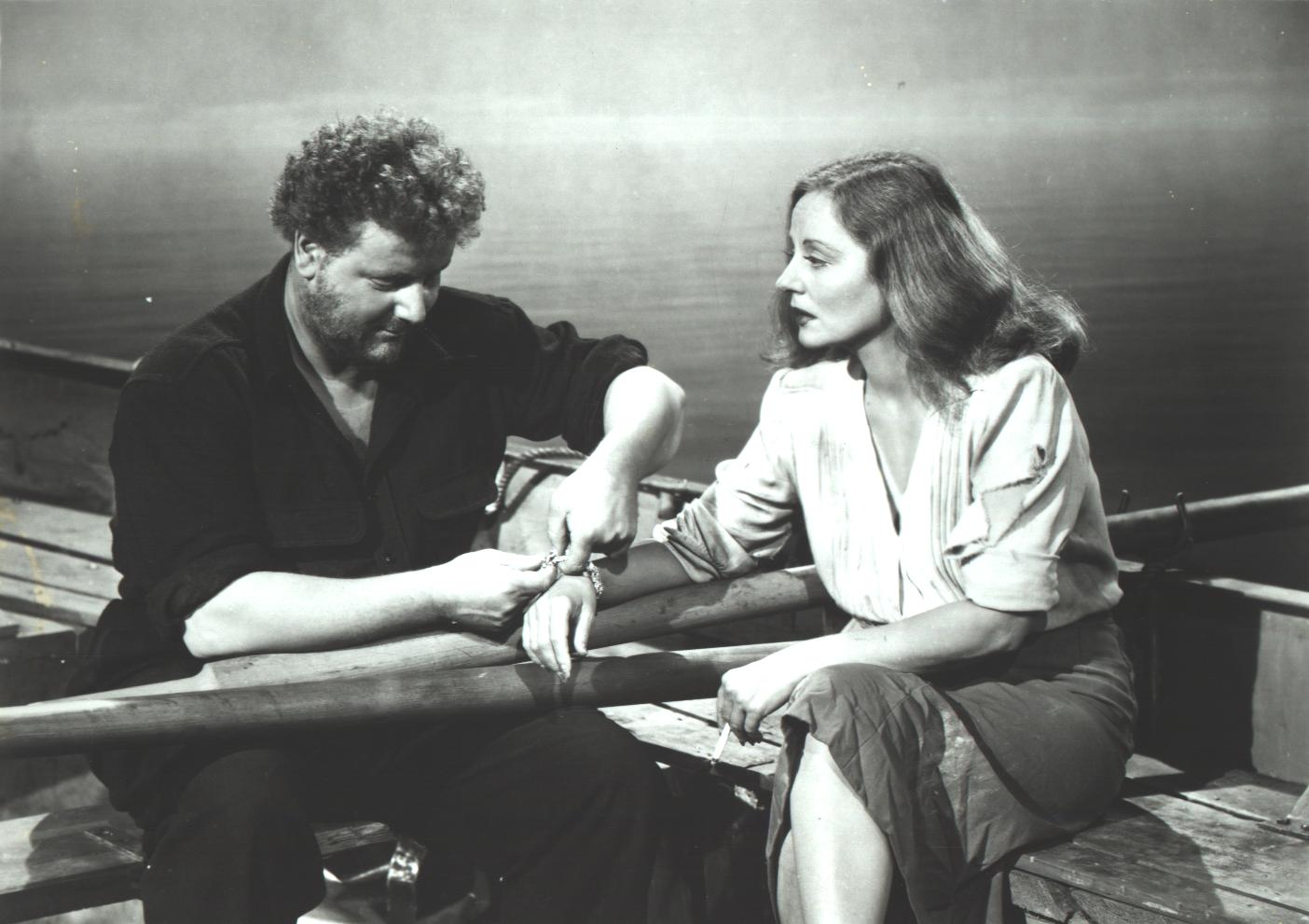
In ‘Lifeboat,’ Walter Slezak fixes the clasp on Tallulah Bankhead’s Cartier wide bracelet. Photo Alamy
Lifeboat (1944)
Hitchcock’s Lifeboat, an intense wartime film about human psychology and survival with a script by John Steinbeck, opens amid the floating debris of a World War II passenger ship that has just been torpedoed by a German U-boat. In the gloom Constance Porter, played by Tallulah Bankhead, climbs aboard a lifeboat wearing a Cartier diamond bracelet and flashing a gold cigarette case and lighter, with some of her other possessions—a camera, fur coat, typewriter, hand luggage, and pocketbook.
The entire movie takes place on the boat and Hitchcock keeps the action flowing by using everything the passengers brought aboard. Bankhead’s luxury items become necessities for survival: her mink coat warms the shell-shocked woman who lost her child, her gold lighter sterilizes a knife used for some surgery and her pocket flask provides anesthetic. The shiny diamond bracelet is used as fish bait. When Bankhead offers it, she adds “I can recommend the bait. I ought to know. I bit on it myself.”
Related Stories:
A Look At the Sparkle in ‘Marie Antoinette’
The Jewelry in ‘Philadelphia Story
Get a gem in your mailbox SIGN UP FOR THE ADVENTURINE NEWSLETTER




